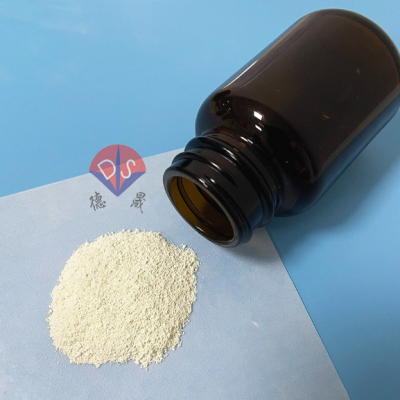Home > Products > Chemiluminescence reagent > Analysis of Luminol 521-31-3 Chemiluminescence Characteristics
Analysis of Luminol 521-31-3 Chemiluminescence Characteristics
100 - 499 Grams
500 - 999 Grams
≥1000 Grams
- Shanghai
- T/T L/C PayPal Western Union
- 5 days
You May Like
-
Introduction and Precautions of Luminol Monosodium Salt 20666-12-0
-
Isoluminol Reagent for Chemiluminescence
-
Luminescence Analysis of High-purity Acridine Ester NSP-DMAE-NHS194357-64-7
-
Direct Chemiluminescence of Acridine Ester DMAE-NHS 115853-74-2
-
Detailed Introduction of Luminescent Reagent NSP-SA 211106-69-3
-
Stability and Precautions of Acridine Ester (NSP-SA-NHS)
Product Details
| CAS No. | 521-31-3 |
Product Description
Luminol, also known as 3-aminobenzoylhydrazine, has a chemiluminescence principle based on its unique molecular structure. Under the combined action of hydrogen peroxide and catalyst, luminol molecules undergo an oxidation process and transform into excited states. Subsequently, this excited state of luminol molecules will release energy and manifest in the form of blue-green light. This luminescence process does not require external light source excitation and is a typical phenomenon of chemiluminescence.
Characteristics of Luminol Chemiluminescence
1. High sensitivity
Luminol exhibits high sensitivity in chemiluminescence. Even at extremely low concentrations, luminol can produce a clear luminescent signal, allowing it to detect trace amounts of blood that are difficult to detect with the naked eye during crime scene investigations, providing important clues for investigators.
2. Good selectivity
The chemiluminescence reaction of luminol exhibits selectivity towards specific oxidants and catalysts. In complex biological or environmental samples, luminol can selectively react with iron containing substances such as hemoglobin in the blood, emitting strong luminescent signals. This selectivity makes luminol widely applicable in biomedical research.
3. Good stability
Luminol molecules have good stability at low temperatures and are not easily oxidized or decomposed. This allows luminol to be stored for a long time, providing convenience for experimental research and practical applications. At the same time, the luminescence reaction of luminol also has good stability, which can continuously emit light in a short period of time, making it easy to observe and record experimental data.
4. Special luminous color
The chemiluminescence color of luminol is blue-green, which has high visual recognition. In crime scene investigation, blue-green glowing signals can quickly attract the attention of investigators and help them locate potential evidence quickly. In biomedical research, this particular luminescent color also helps researchers distinguish between different biomolecules or cell types.
5. Environmentally friendly
The chemiluminescence reaction of luminol does not produce harmful substances or pollutants, making it a green and environmentally friendly chemiluminescence reagent that meets the requirements of sustainable development strategy.
Application of Luminol Chemiluminescence
1. Criminal investigation
In the field of criminal investigation, luminol has become a powerful tool for detecting potential evidence such as bloodstains due to its high sensitivity and unique luminescent color. By spraying luminol solution, investigators can quickly locate bloodstains on the scene, providing important clues for the investigation of the case.
2. Biomedical research
In biomedical research, luminol can provide theoretical support for the diagnosis and treatment of various biological processes in organisms by labeling specific biomolecules or cell types.
3. Environmental monitoring
In addition, luminol can also be used in the field of environmental monitoring. By detecting certain chemicals or pollutants in the environment, environmental quality can be evaluated and corresponding control measures can be taken.
As a manufacturer of chemiluminescence reagents such as luminol, Desheng can supply high-purity raw material powders. This high-purity luminol powder not only ensures the accuracy of experimental results, but also improves the sensitivity and stability of luminescence. At the same time, the company is committed to providing customers with high-quality products and services to meet the growing demands of scientific research and the market. If you have any recent purchasing needs, please click on the website to inquire about details and make a purchase!
Contact Us

- Hubei New Desheng Material Technology Co., Ltd
- Contact nameDoris Yang Chat Now
Product Categories
| Additive for blood collection | Biological buffer | Chemiluminescence reagent | Chromogenic substrate |
| enzyme preparation |
New Products
-
The Labeling Principle and Application of Acridine Hydrazide NSP-SA-ADH
-
Application and pH Stability of Acetyl CoA Oxidase
-
Tris and Glutamate Dehydrogenase Work Together on Homocysteine Assay Kit
-
The Relationship Between Purine Nucleoside Phosphorylase and Nucleic Acid Synthesis and Decomposition
-
Introduction of Desheng on Alpha Glucosidase
-
Glucose Dehydrogenase: a Key Enzyme in IVD in Vitro Diagnostic Reagents
-
Detailed Explanation of Storage Methods for Adenosine Deaminase (ADA)
-
Biological Functions and Applications of Malate Dehydrogenase
-
The Price of TRIS-HCL 1185-53-1 Produced by Desheng Has Been Lowered. Please Feel Free to Consult and Purchase
-
Why Should we Pay Attention to Solubility When Purchasing Biological Buffer TRIS 77-86-1?
-
The Effect of Purity of BICINE Powder 150-25-4 as a Biological Buffer on the Performance of Buffer Solutions
-
Introduction to the Transportation Packaging of CAPS Powder 1135-40-6, a Biological Buffering Agent
-
Compatibility of Biological Buffer MOPS 1132-61-2 With Other Reagents
-
Application of Biological Buffer TAPS 29915-38-6 in Enzyme Activity Research
-
The Advantage of High Purity of EPPS Powder 16052-06-5 Raw Materials for Biological Buffering Agents
-
Advantages of MOPSO Buffer 68399-77-9 in Low-temperature Biochemical Work
-
What Does HEPES Buffer 7365-45-9 do for Cell Culture
-
Application of Biological Buffer PIPES 5625-37-6 in Biochemical Research
-
How to Determine and Choose a BES Buffer 10191-18-1 Manufacturer for Procurement
-
Biological Buffer DIPSO (68399-80-4) Detailed Description for Quick Understanding
-
Multiple Applications of CHES Buffer in Biological Research
-
Advantages of High TOOS Molar Absorbance
-
How to Obtain High-quality TOPS Powder as a Chromogenic Substrate
-
Stability and Storage Conditions of ADOS Products as Chromogenic Substrates
Popular Searches
- white powder
- blue light
- monosodium salt
- sodium salt
- light yellow powder
- hematology analyzer
- lab glassware
- labware
- flask
- laboratory equipment
- rapid test
- chemical reagent
- biochemical
- diagnostic
- elisa
- elisa kit
- diagnostic reagent
- cleaning solution
- machine solution
- clean solution
- short delivery time
- acid reagent
- lab reagent
- wash buffer
Recommended Products
- Air and Environmental On-Site Testing Items Table
- Water Sample Mercury Ion (Hg²⁺) Concentration Assay Kit
- Nitrite Test Paper 0~100 Ppm
- On Site Rapid Detection of Surface Cleanliness of Catering Utensils
- Sodium Metasilicate Granular 25kg Powder
- Chlorine Dioxide Quick Test Kit
- Residual Chlorine Quick Test Kit
- Rapid Determination of Available Chlorine
- Quaternary Ammonium Sanitizer Concentration Test Strips [0~4000 Ppm]
- Quaternary Ammonium Sanitizer Concentration Test Strips [0~1000 Ppm]
- You Need to Pay Attention to These Three Erroneous Views When Purchasing Carbopol Powder
- Exploration of the Advantages of MAOS Chromogenic Substrates in Biochemical Detection
Find Similar Products By Category
- Chemicals > Chemical Reagent
- Please Enter your Email Address
- Please enter the content for your inquiry.
We will find the most reliable suppliers for you according to your description.
Send Now-
 Doris Yang
Hi there! Welcome to my shop. Let me know if you have any questions.
Doris Yang
Hi there! Welcome to my shop. Let me know if you have any questions.
Your message has exceeded the limit.

- Contact supplier for lowest price
- Customized Request
- Request Sample
- Request Free Catalogs
Your message has exceeded the limit.
-
Purchase Quantity
-
*Sourcing Details
Your inquiry content must be between 10 to 5000 characters.
-
*Email
Please enter Your valid email address.
-
Mobile





